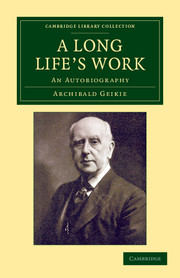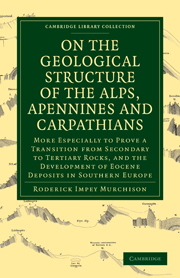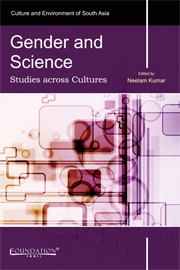Refine search
Actions for selected content:
10307 results in History of science: general interest
Christine Ferguson, Determined Spirits: Eugenics, Heredity and Racial Regeneration in Anglo-American Spiritualist Writing, 1848–1930. Edinburgh: Edinburgh University Press, 2012. Pp. x+230. ISBN 978-0-7486-3965-6. £70.00 (hardback).
-
- Journal:
- The British Journal for the History of Science / Volume 46 / Issue 2 / June 2013
- Published online by Cambridge University Press:
- 13 May 2013, pp. 351-352
- Print publication:
- June 2013
-
- Article
- Export citation
Muzaffar Iqbal (ed.), New Perspectives on the History of Islamic Science. Islam and Science: Historic and Contemporary Perspectives, vol. 3. Farnham: Ashgate, 2012. Pp. xxiv+546. ISBN 978-0-75462-2914-6. £140.00 (hardback). - Muzaffar Iqbal (ed.), Studies in the Making of Islamic Science: Knowledge in Motion. Islam and Science: Historic and Contemporary Perspectives, vol. 4. Farnham: Ashgate, 2012. Pp. xxiii+552. ISBN 978-0-75462-2916-0. £140.00 (hardback).
-
- Journal:
- The British Journal for the History of Science / Volume 46 / Issue 2 / June 2013
- Published online by Cambridge University Press:
- 13 May 2013, pp. 341-342
- Print publication:
- June 2013
-
- Article
- Export citation
Geoffrey Cantor, Religion and the Great Exhibition of 1851. Oxford: Oxford University Press, 2011. Pp. xi+226. ISBN: 978-0-19-959667-6. £70.00 (hardback).
-
- Journal:
- The British Journal for the History of Science / Volume 46 / Issue 2 / June 2013
- Published online by Cambridge University Press:
- 13 May 2013, pp. 347-348
- Print publication:
- June 2013
-
- Article
- Export citation
Sachiko Kusukawa, Picturing the Book of Nature: Image, Text and Argument in Sixteenth-Century Human Anatomy and Medical Botany. Chicago and London: The University of Chicago Press, 2012. Pp. xvii+331. ISBN 978-0-226-46529-6. $45.00/£29.00 (hardback).
-
- Journal:
- The British Journal for the History of Science / Volume 46 / Issue 2 / June 2013
- Published online by Cambridge University Press:
- 13 May 2013, pp. 342-344
- Print publication:
- June 2013
-
- Article
- Export citation
Gabrielle Hecht (ed.), Entangled Geographies: Empire and Technopolitics in the Global Cold War. Cambridge, MA and London: MIT Press, 2011. Pp. ix+337. ISBN 978-0-262-51578-8. £20.95 (paperback).
-
- Journal:
- The British Journal for the History of Science / Volume 46 / Issue 2 / June 2013
- Published online by Cambridge University Press:
- 13 May 2013, pp. 354-355
- Print publication:
- June 2013
-
- Article
- Export citation
Books received
-
- Journal:
- The British Journal for the History of Science / Volume 46 / Issue 2 / June 2013
- Published online by Cambridge University Press:
- 13 May 2013, pp. 357-358
- Print publication:
- June 2013
-
- Article
- Export citation
BJH volume 46 issue 2 Cover and Back matter
-
- Journal:
- The British Journal for the History of Science / Volume 46 / Issue 2 / June 2013
- Published online by Cambridge University Press:
- 13 May 2013, pp. b1-b6
- Print publication:
- June 2013
-
- Article
-
- You have access
- Export citation
Gordon Chancellor and John van Wyhe (eds.), Charles Darwin's Notebooks from the Voyage of the ‘Beagle’. Foreword by Richard Darwin Keynes. Cambridge: Cambridge University Press, 2009. Pp. xxxiv+615. ISBN 978-0-521-51757-7. £104.00 (hardback). - John van Wyhe (ed.), Charles Darwin's Shorter Publications 1829–1883. Cambridge: Cambridge University Press, 2009. Foreword by Janet Browne and Jim Secord. Pp. xxvi+529. ISBN 978-0-521-88809-7. £97.00 (hardback). - Edmund Russell, Evolutionary History: Uniting History and Biology to Understand Life on Earth. Studies in Environment and History. Cambridge: Cambridge University Press, 2011. Pp. xxii+216. ISBN 978-0-521-74509-3. £16.99 (paperback).
-
- Journal:
- The British Journal for the History of Science / Volume 46 / Issue 2 / June 2013
- Published online by Cambridge University Press:
- 13 May 2013, pp. 349-351
- Print publication:
- June 2013
-
- Article
- Export citation
Alexander C.T. Geppert (ed.), Imagining Outer Space: European Astroculture in the Twentieth Century. Basingstoke: Palgrave Macmillan, 2012. Pp. xvii+393. ISBN 978-0-230-23172-6. £70.00 (hardback).
-
- Journal:
- The British Journal for the History of Science / Volume 46 / Issue 2 / June 2013
- Published online by Cambridge University Press:
- 13 May 2013, pp. 352-354
- Print publication:
- June 2013
-
- Article
- Export citation
In a different vein? Scientific development in the Greek Orthodox East
-
- Journal:
- The British Journal for the History of Science / Volume 46 / Issue 2 / June 2013
- Published online by Cambridge University Press:
- 13 May 2013, pp. 335-340
- Print publication:
- June 2013
-
- Article
- Export citation
Benjamin Wardhaugh (ed.), The History of the History of Mathematics: Case Studies for the Seventeenth, Eighteenth and Nineteenth Centuries. Oxford: Peter Lang, 2012. Pp. vi+187. ISBN 978-3-0343-0708-6. £32.00 (paperback).
-
- Journal:
- The British Journal for the History of Science / Volume 46 / Issue 2 / June 2013
- Published online by Cambridge University Press:
- 13 May 2013, pp. 344-345
- Print publication:
- June 2013
-
- Article
- Export citation
Jed Z. Buchwald and Mordechai Feingold, Newton and the Origin of Civilization. Princeton and Oxford: Princeton University Press, 2013. Pp. xii+528. ISBN 978-0-691-15478-7. £34.95 (hardback).
-
- Journal:
- The British Journal for the History of Science / Volume 46 / Issue 2 / June 2013
- Published online by Cambridge University Press:
- 13 May 2013, pp. 345-347
- Print publication:
- June 2013
-
- Article
- Export citation
BJH volume 46 issue 2 Cover and Front matter
-
- Journal:
- The British Journal for the History of Science / Volume 46 / Issue 2 / June 2013
- Published online by Cambridge University Press:
- 13 May 2013, pp. f1-f2
- Print publication:
- June 2013
-
- Article
-
- You have access
- Export citation

A Long Life's Work
- An Autobiography
-
- Published online:
- 05 May 2013
- Print publication:
- 26 April 2012
- First published in:
- 1924

On the Geological Structure of the Alps, Apennines and Carpathians
- More Especially to Prove a Transition from Secondary to Tertiary Rocks, and the Development of Eocene Deposits in Southern Europe
-
- Published online:
- 05 May 2013
- Print publication:
- 02 June 2011
- First published in:
- 1849

Gender and Science
- Studies across Cultures
-
- Published by:
- Foundation Books
- Published online:
- 05 May 2013
- Print publication:
- 01 July 2012
Industrial research at the Eastern Telegraph Company, 1872–1929
-
- Journal:
- The British Journal for the History of Science / Volume 47 / Issue 1 / March 2014
- Published online by Cambridge University Press:
- 10 April 2013, pp. 119-146
- Print publication:
- March 2014
-
- Article
- Export citation
Seized natural-history collections and the redefinition of scientific cosmopolitanism in the era of the French Revolution
-
- Journal:
- The British Journal for the History of Science / Volume 47 / Issue 1 / March 2014
- Published online by Cambridge University Press:
- 26 March 2013, pp. 15-41
- Print publication:
- March 2014
-
- Article
- Export citation
The Copernican Question: Prognostication, Skepticism, and Celestial Order
-
- Journal:
- The British Journal for the History of Science / Volume 46 / Issue 1 / March 2013
- Published online by Cambridge University Press:
- 21 March 2013, pp. 151-159
- Print publication:
- March 2013
-
- Article
- Export citation
Contents
-
- Book:
- North East Indian Linguistics
- Published by:
- Foundation Books
- Published online:
- 05 September 2013
- Print publication:
- 01 March 2013, pp iii-iv
-
- Chapter
- Export citation
